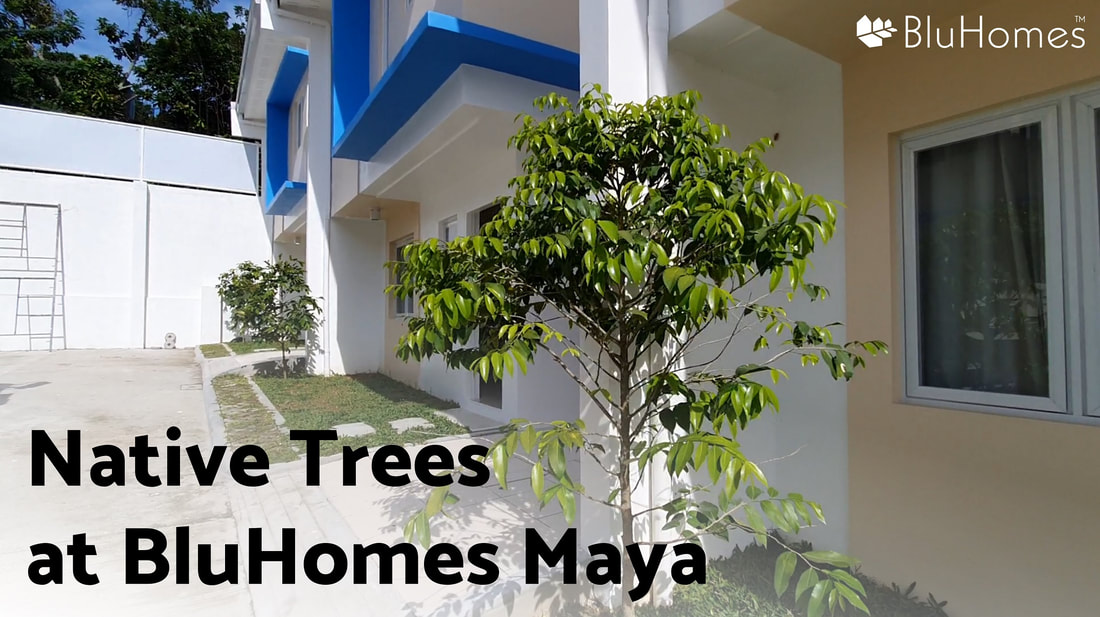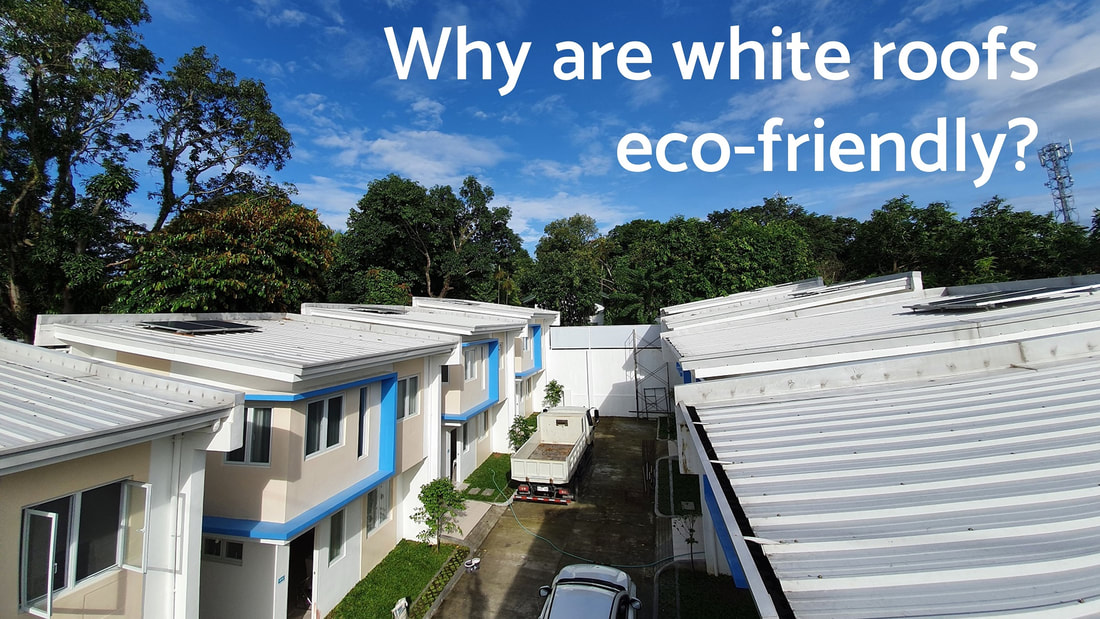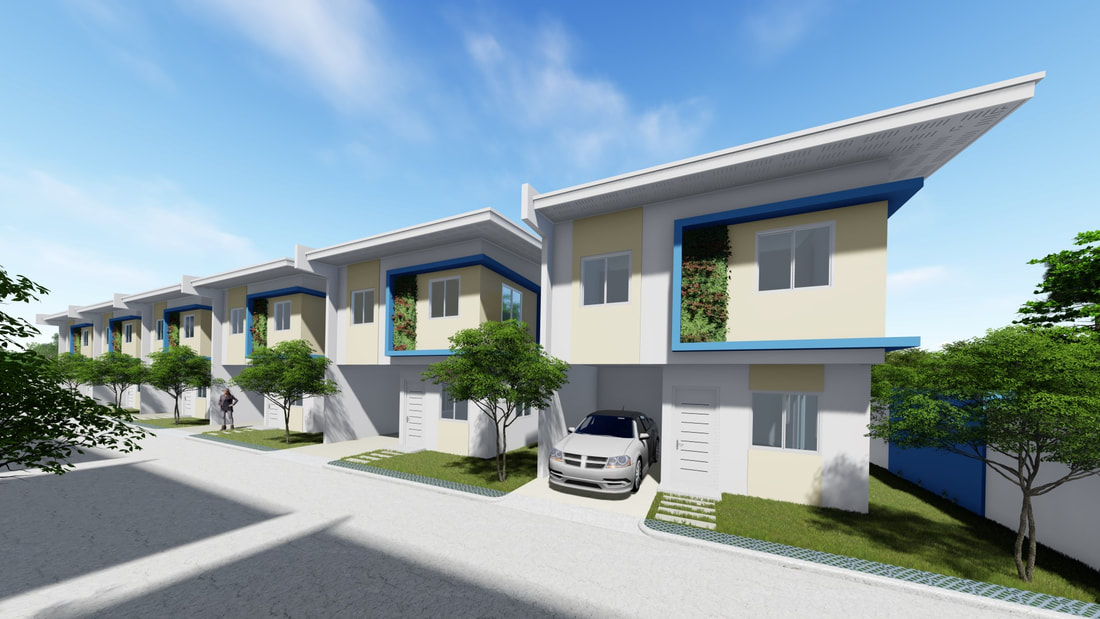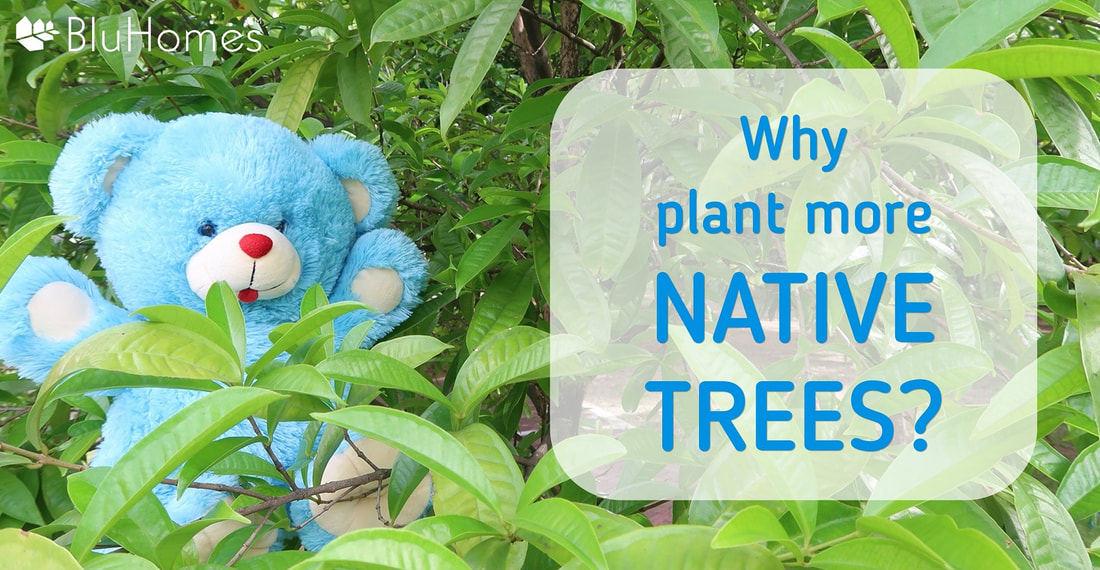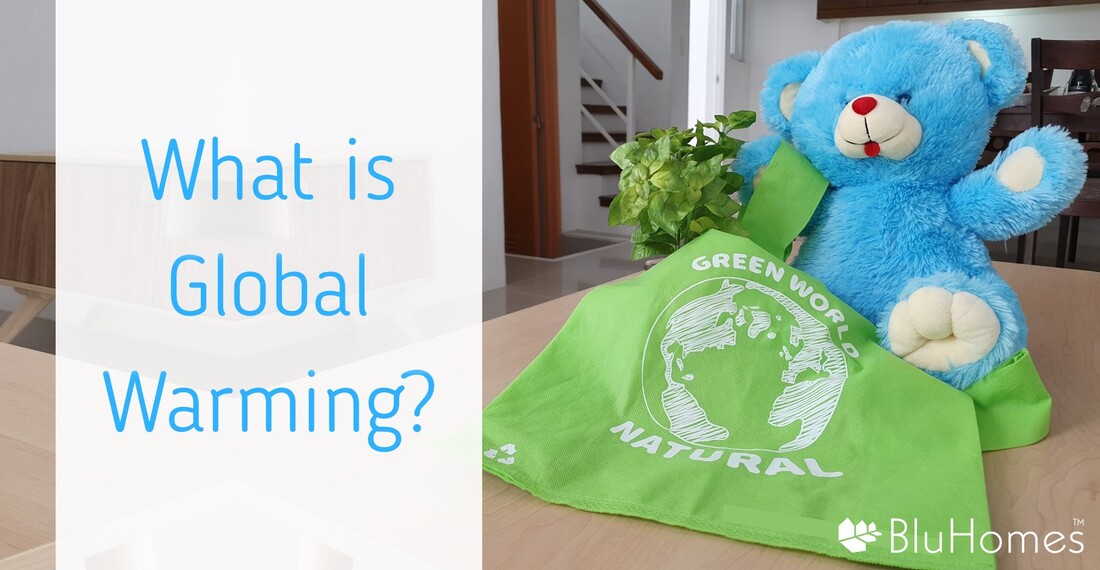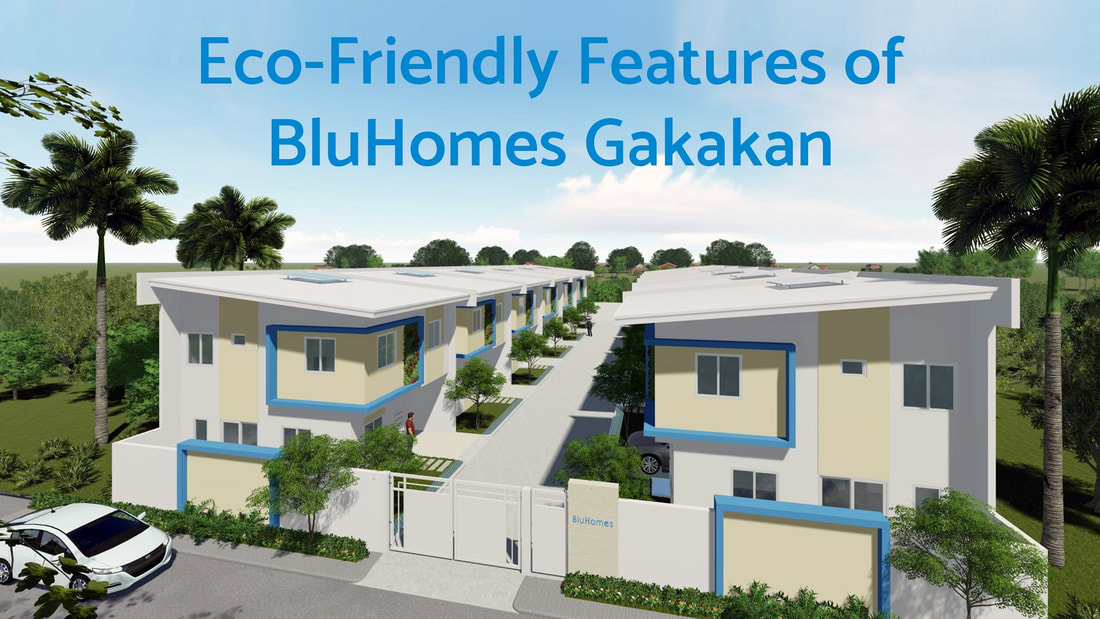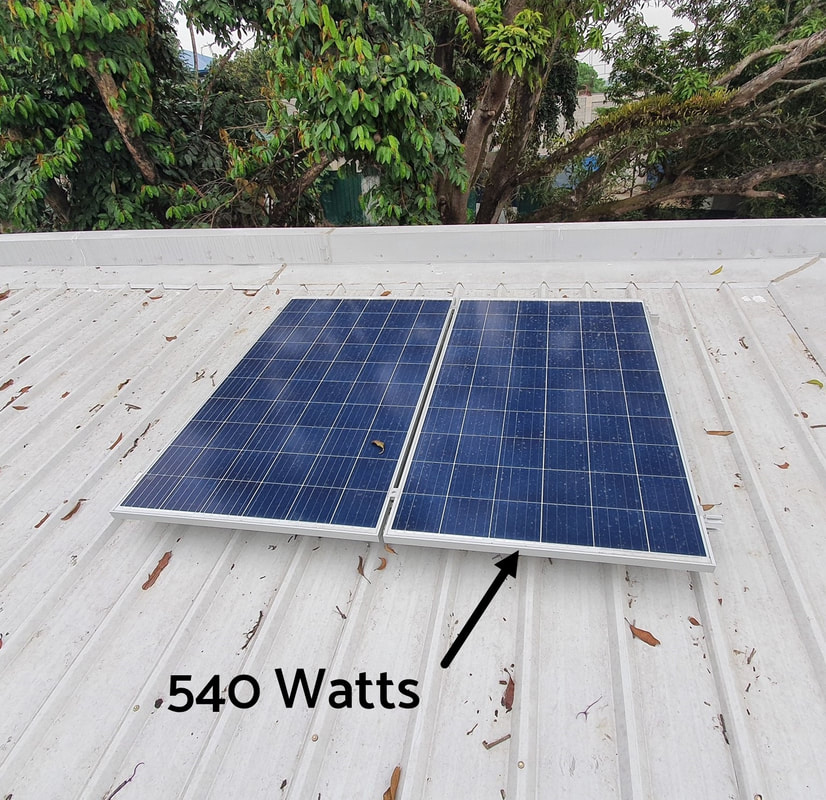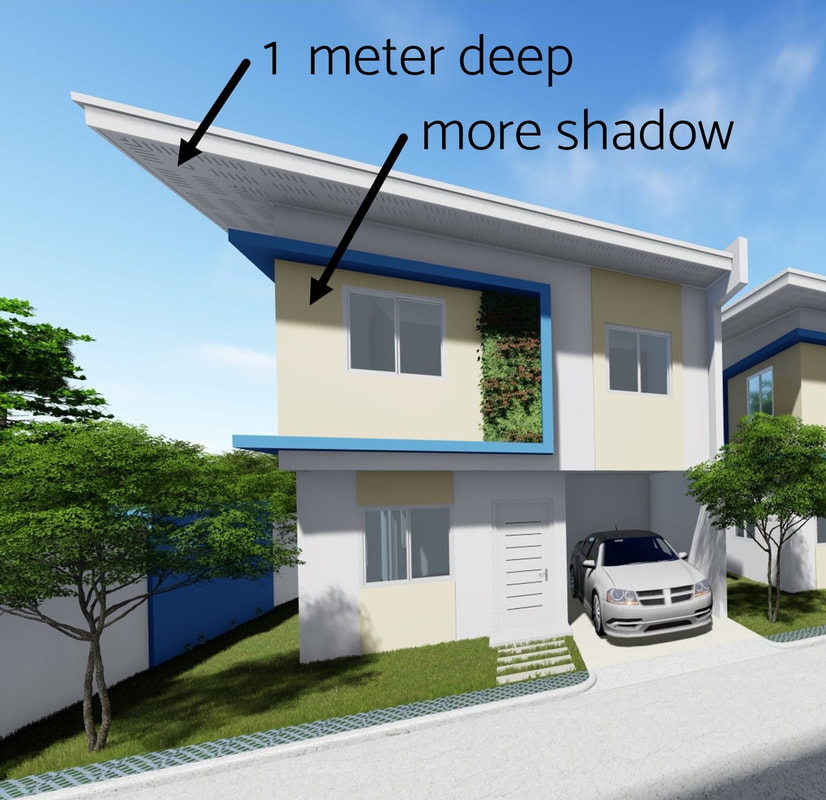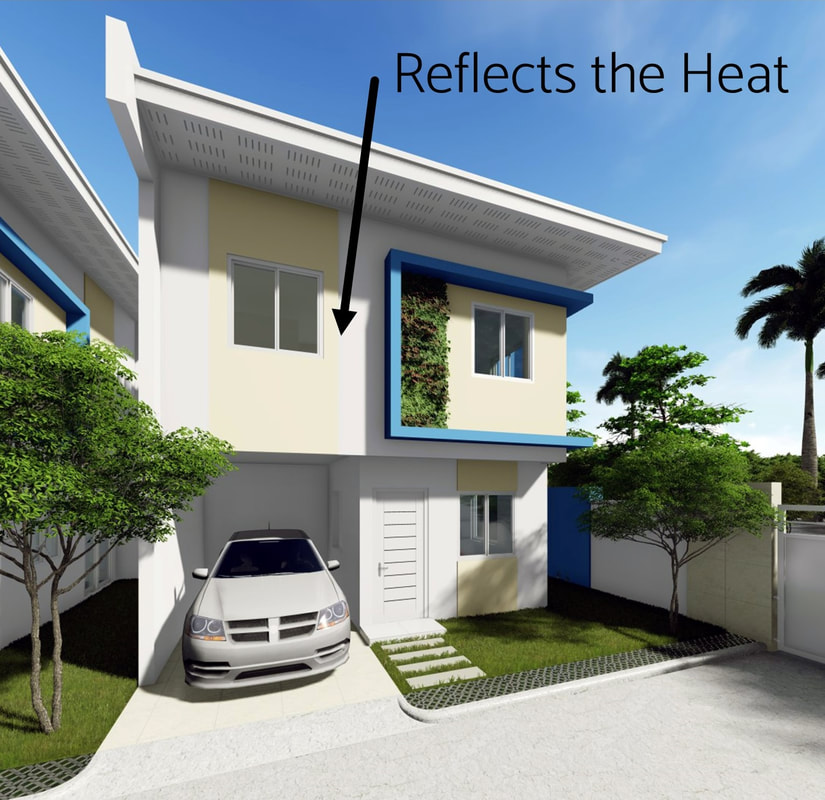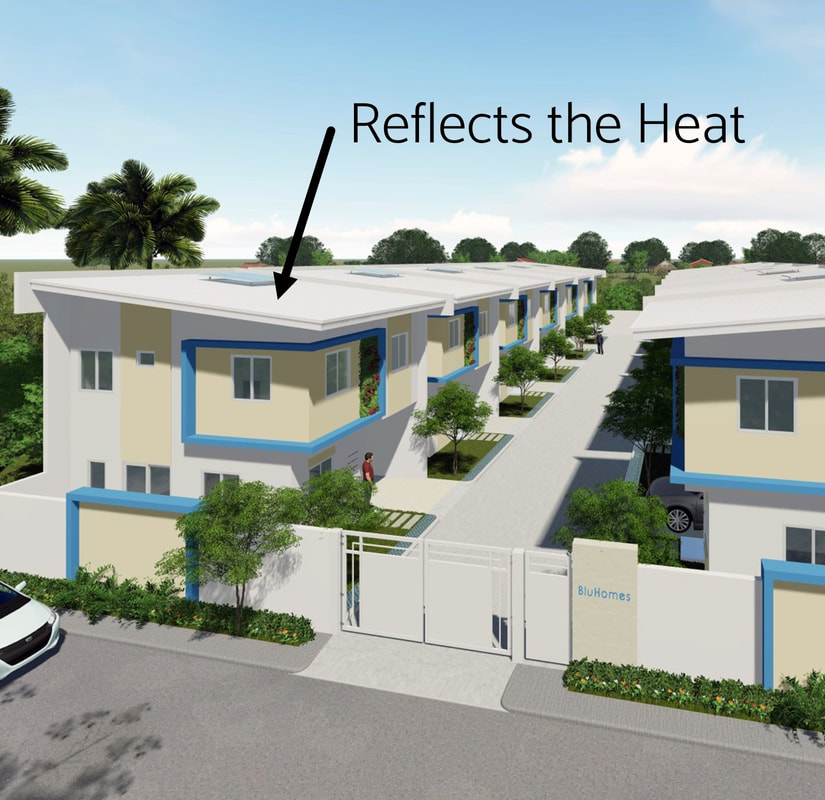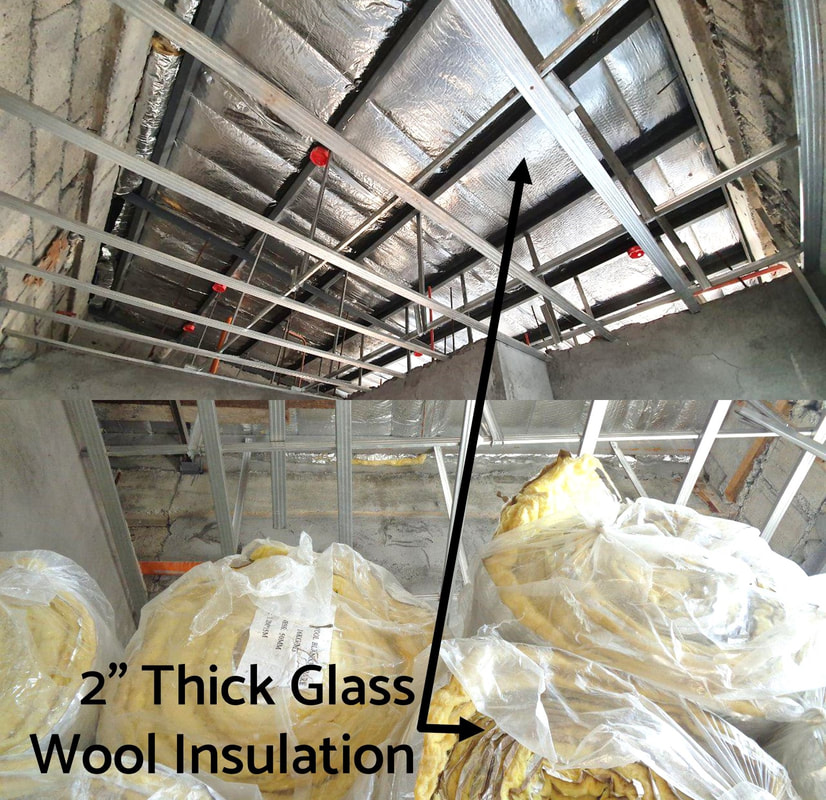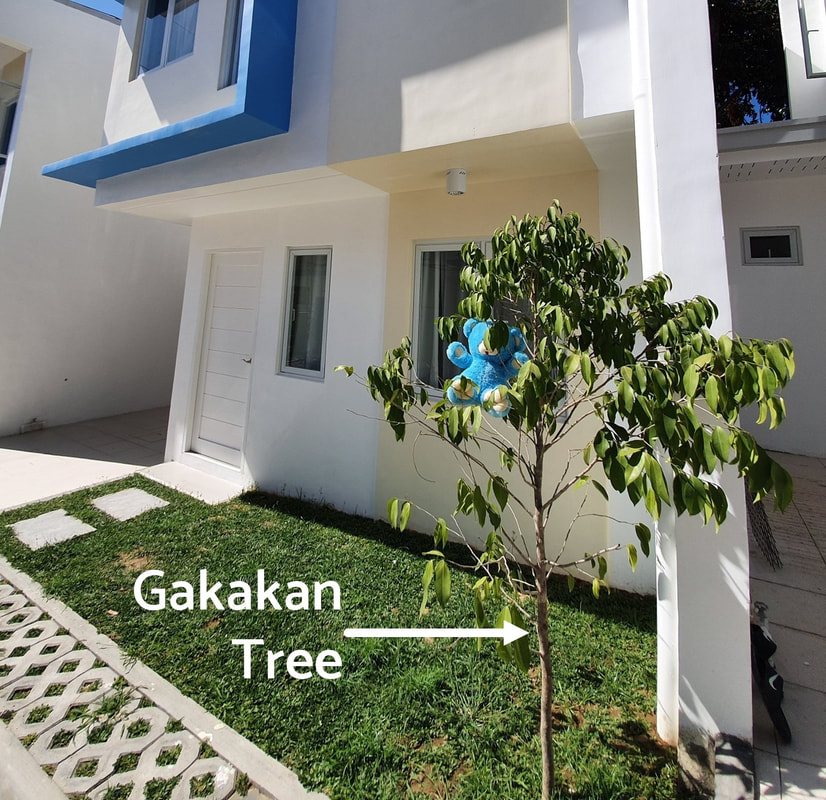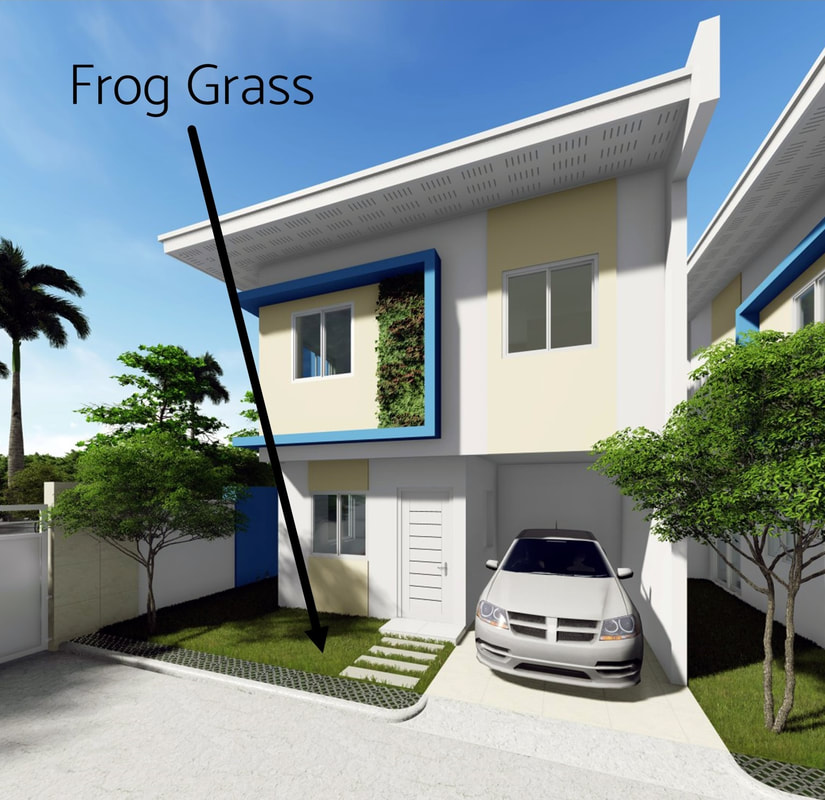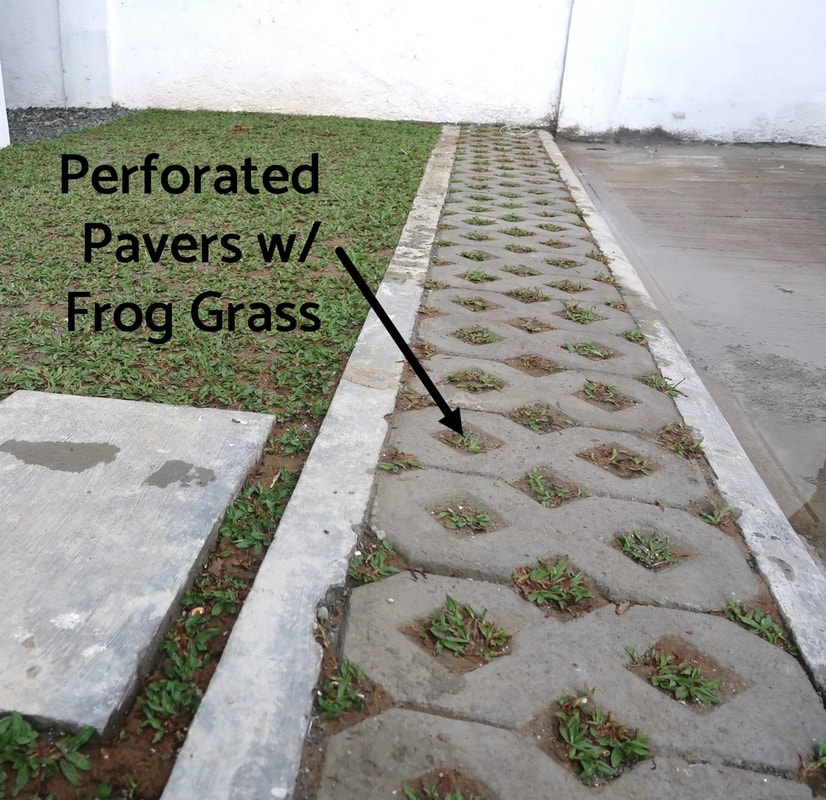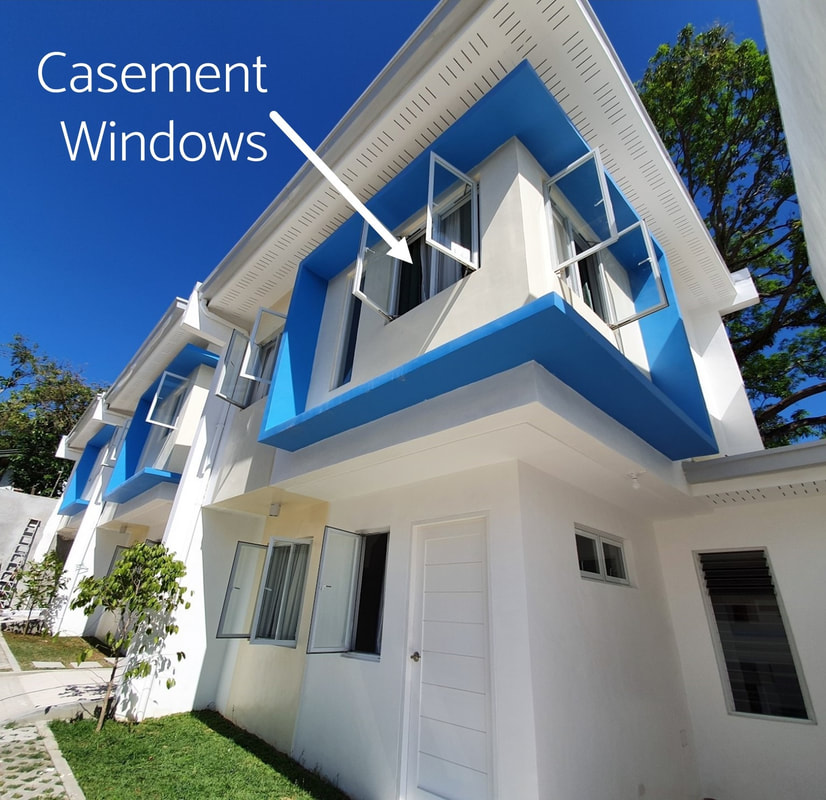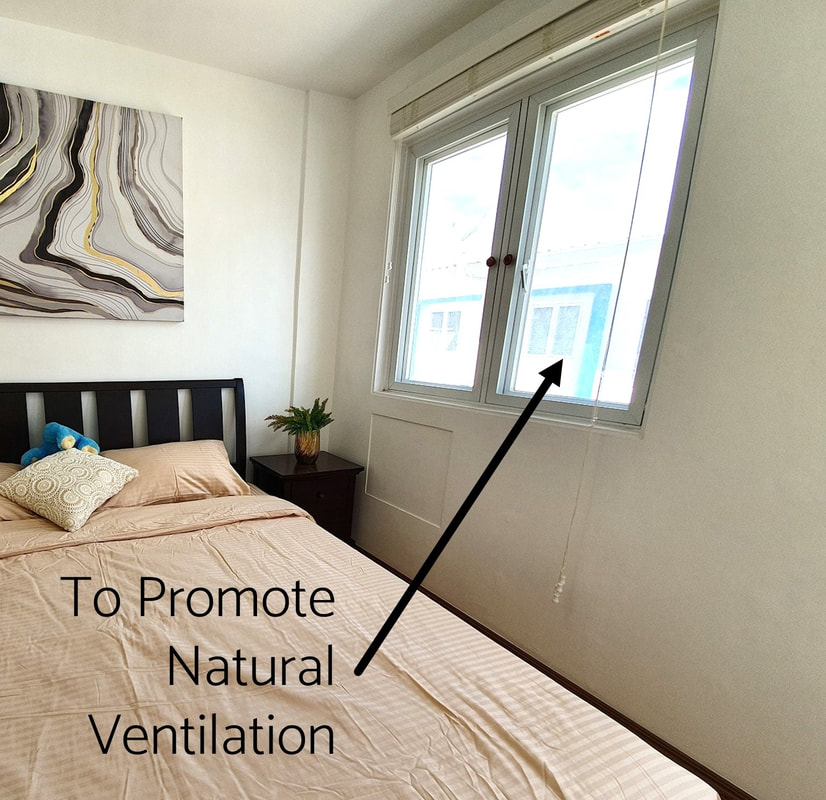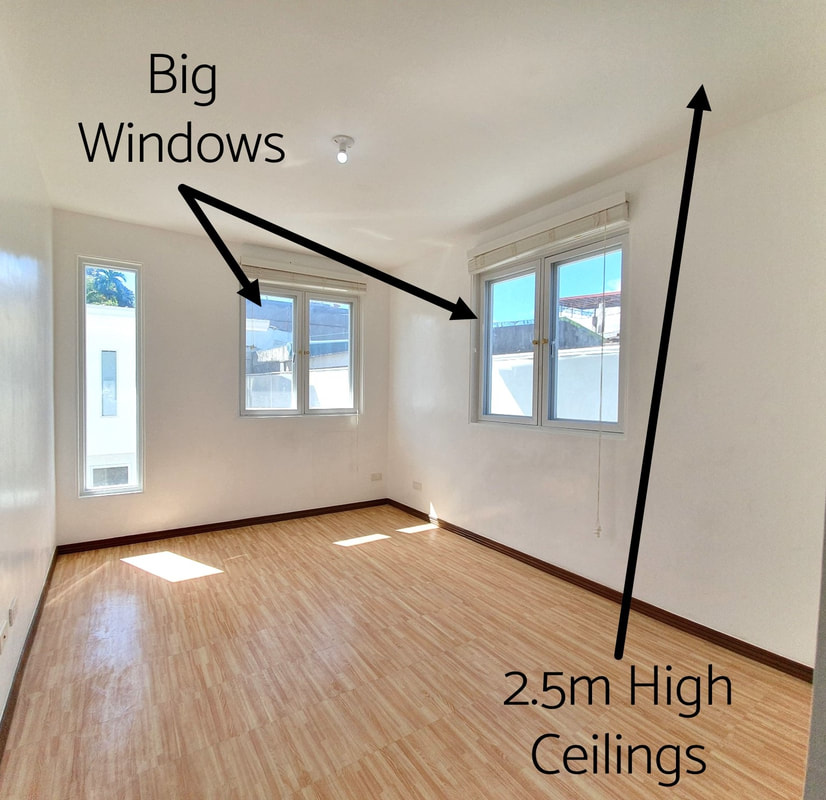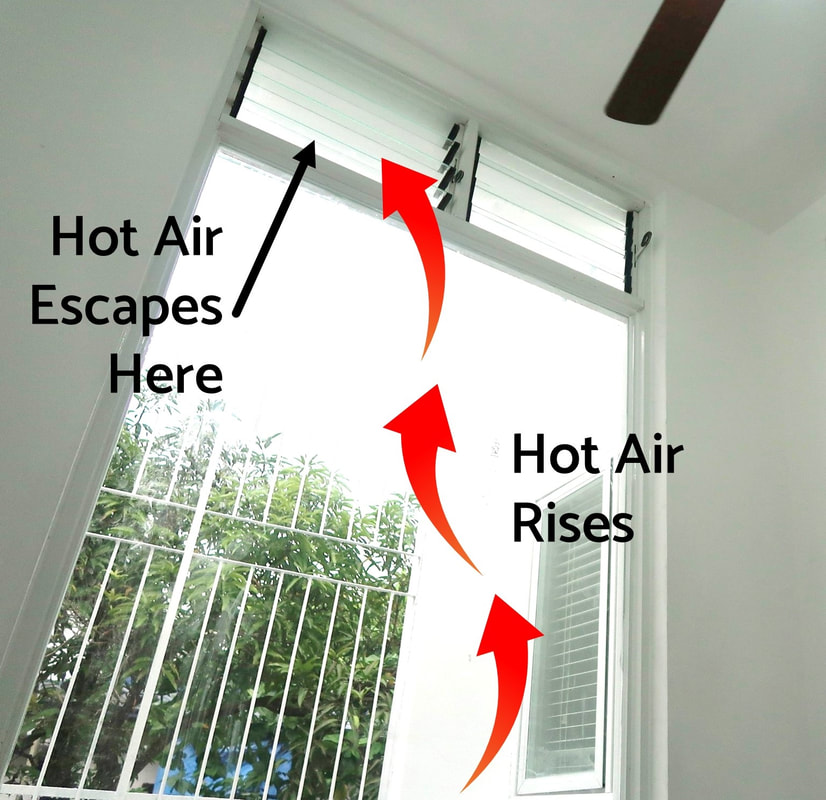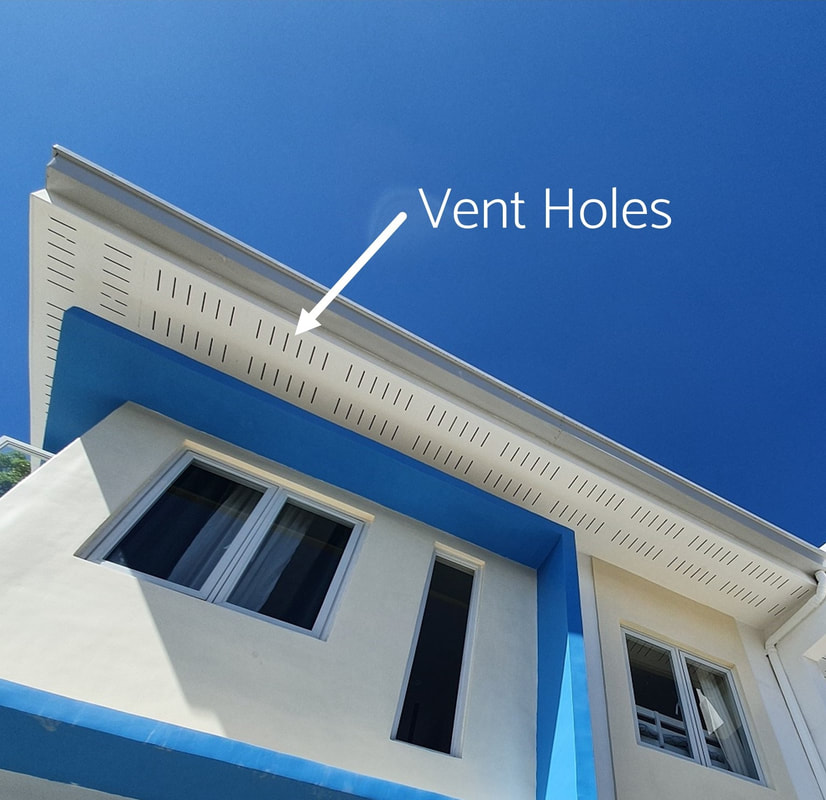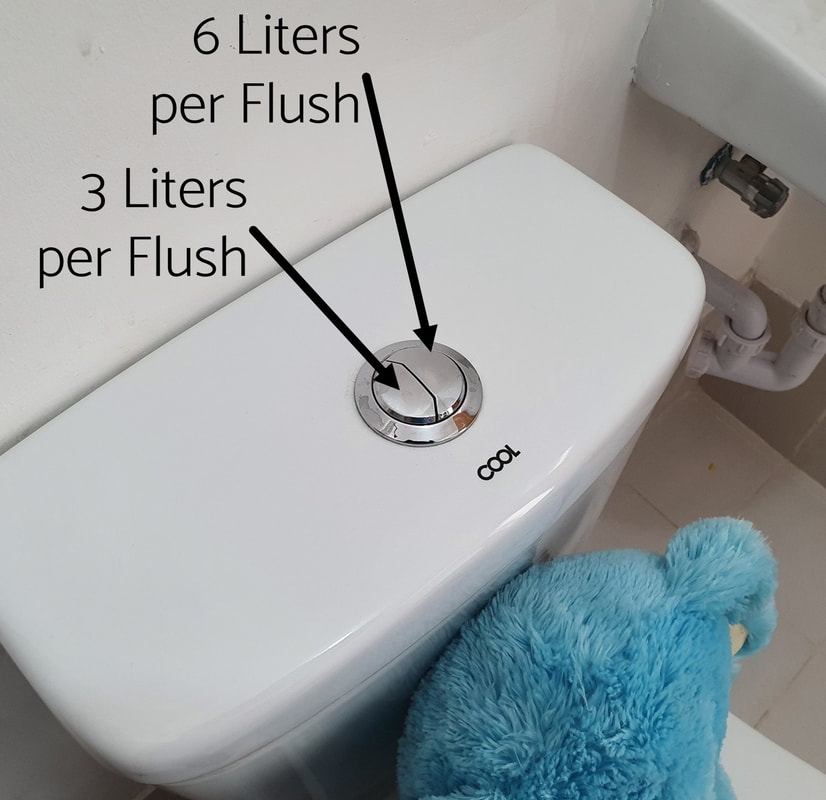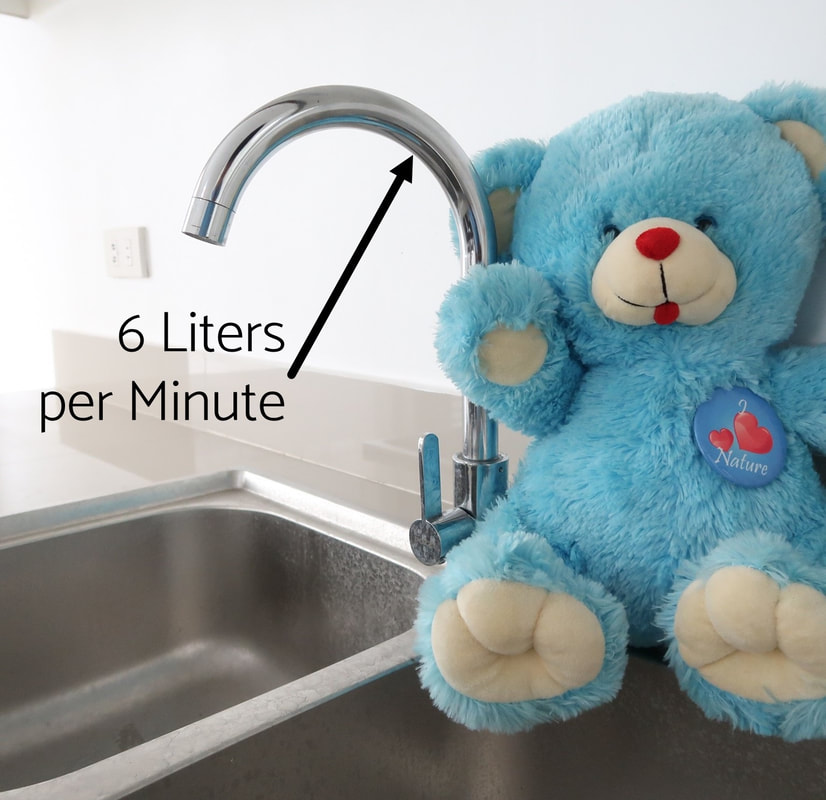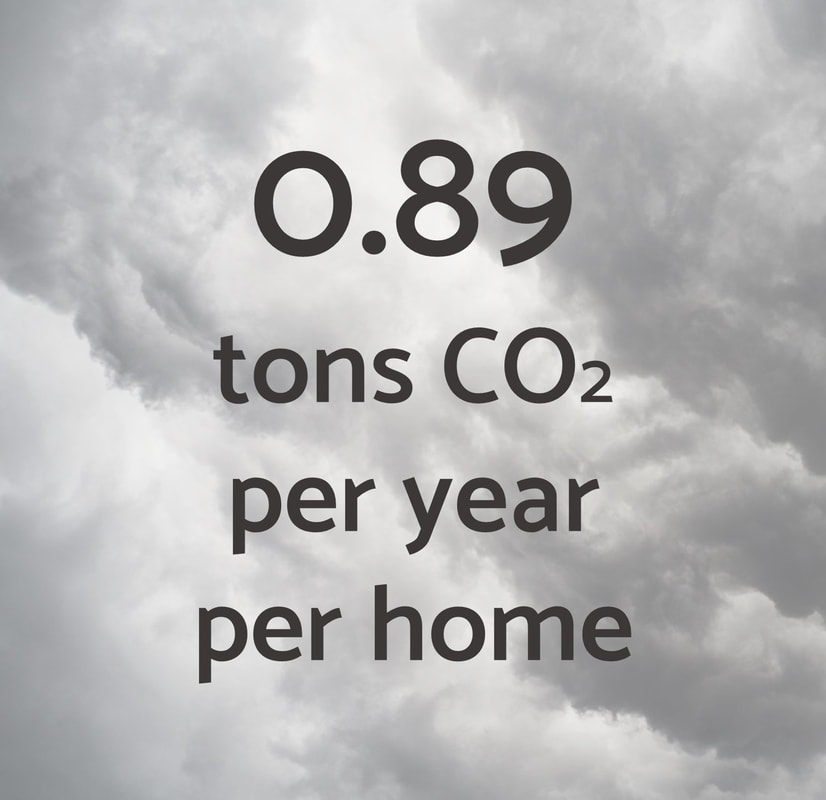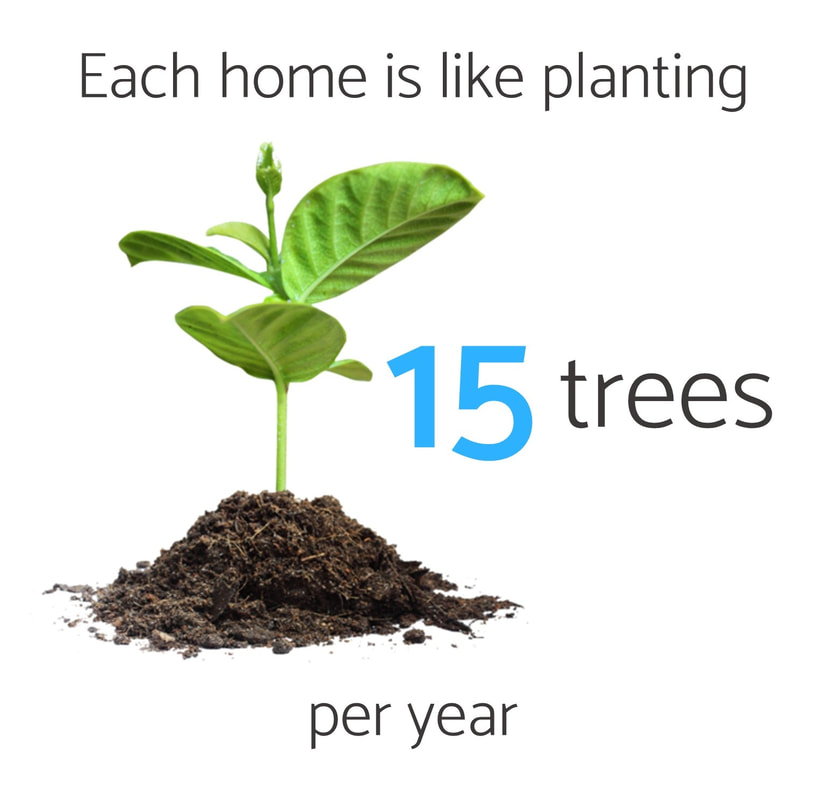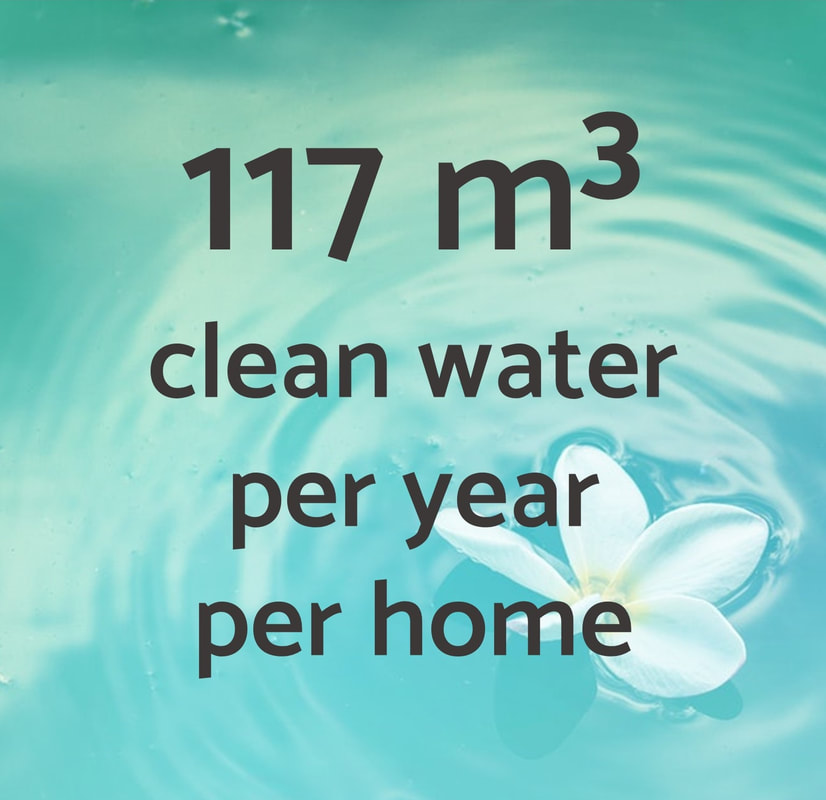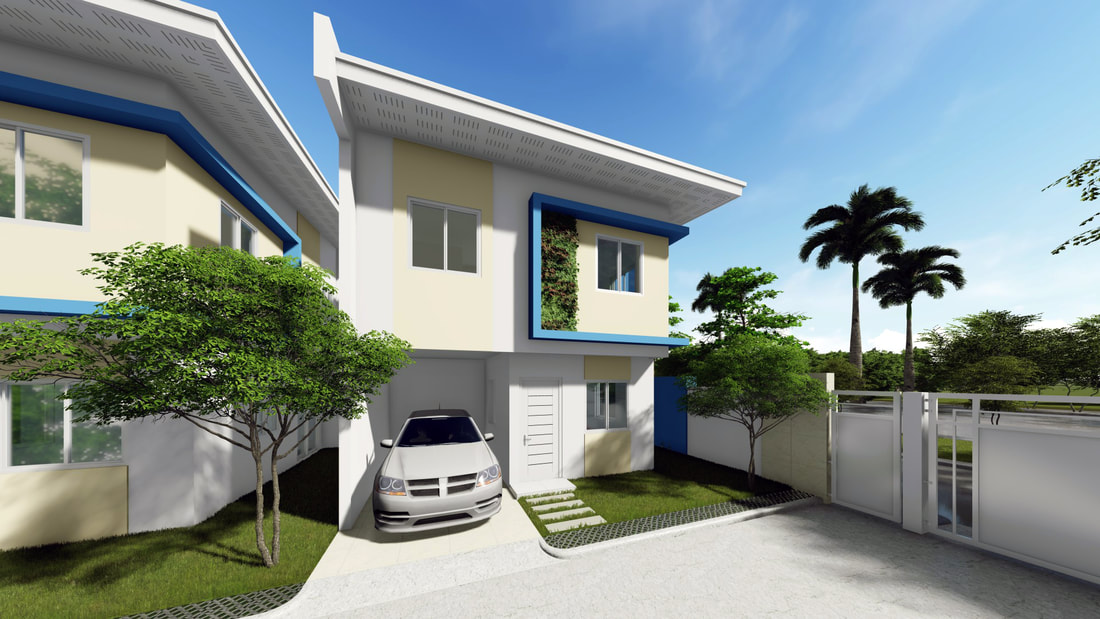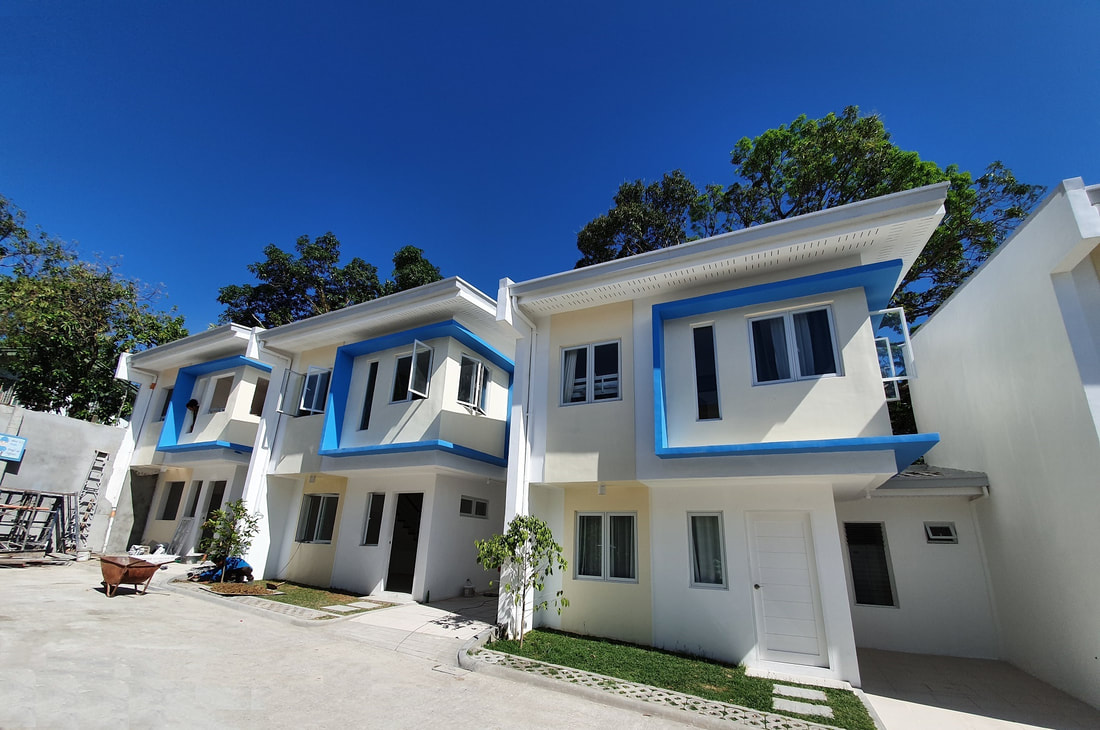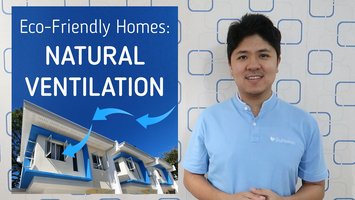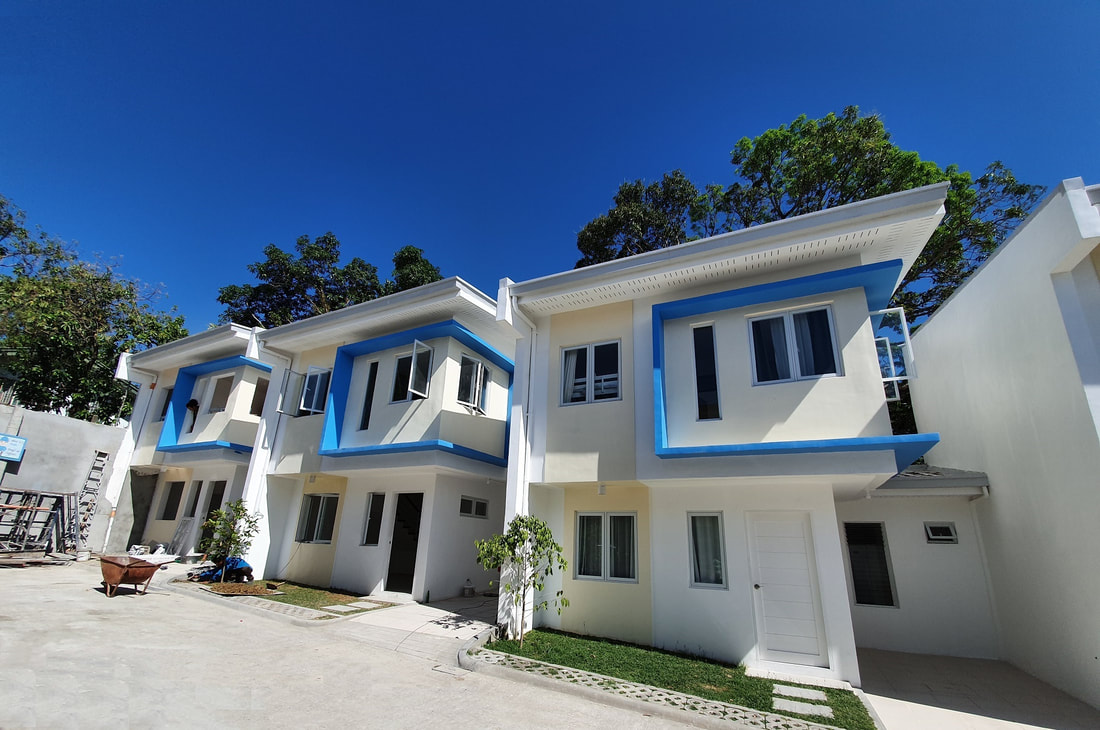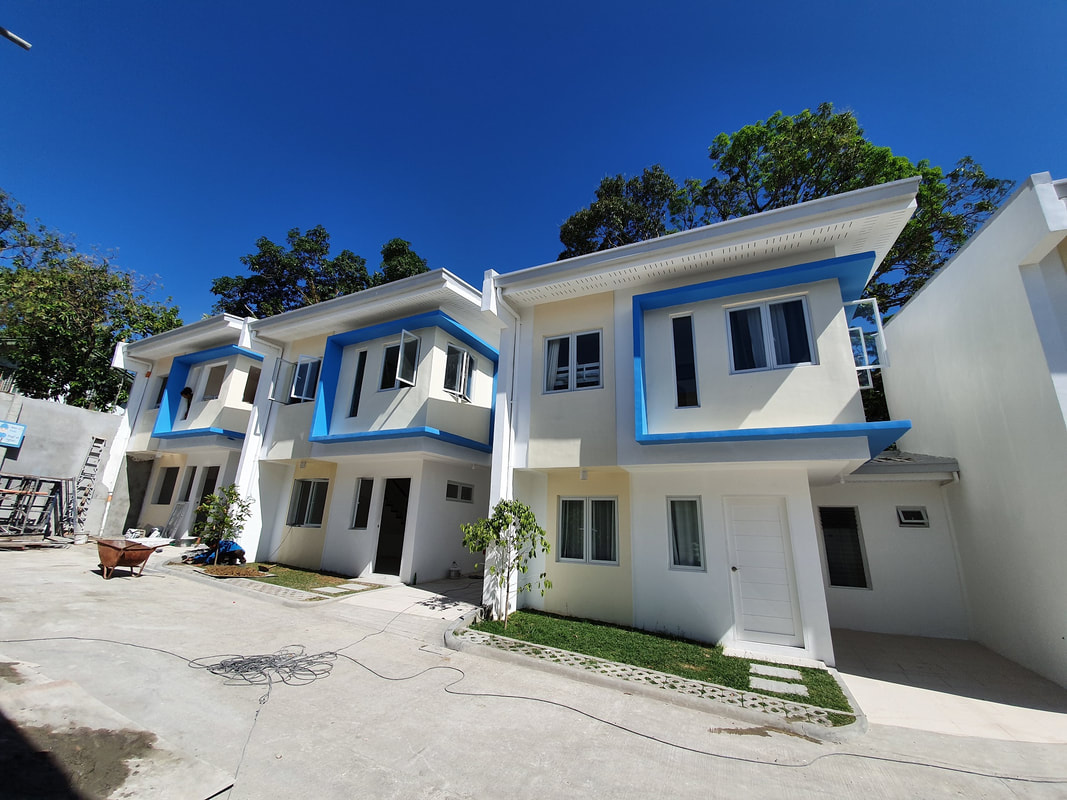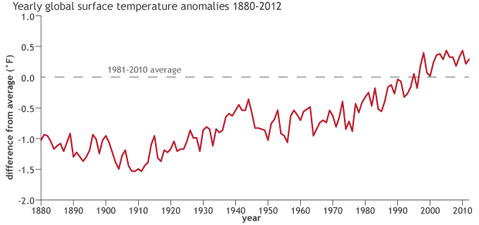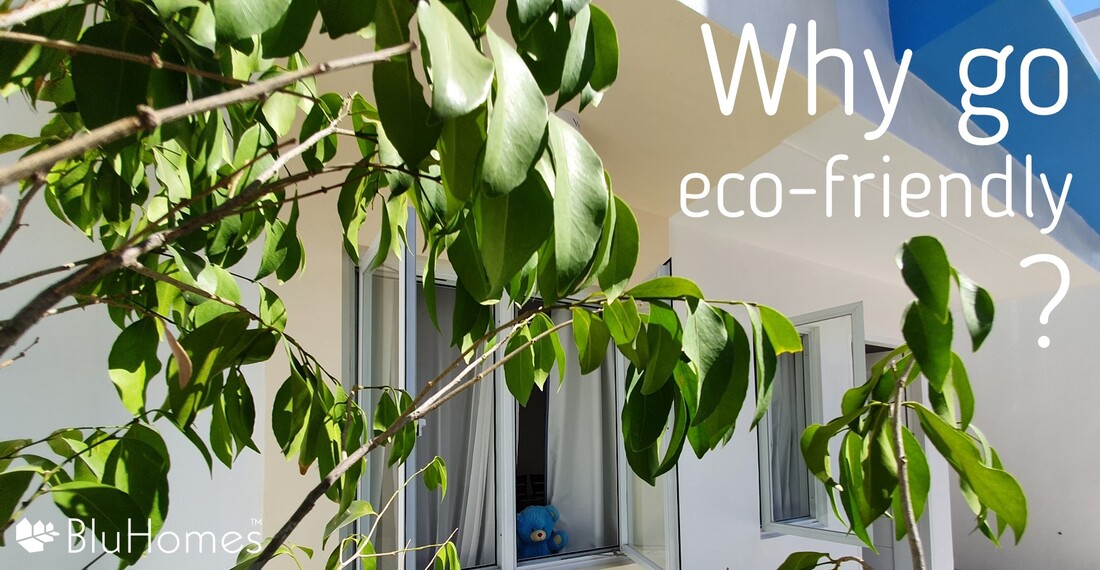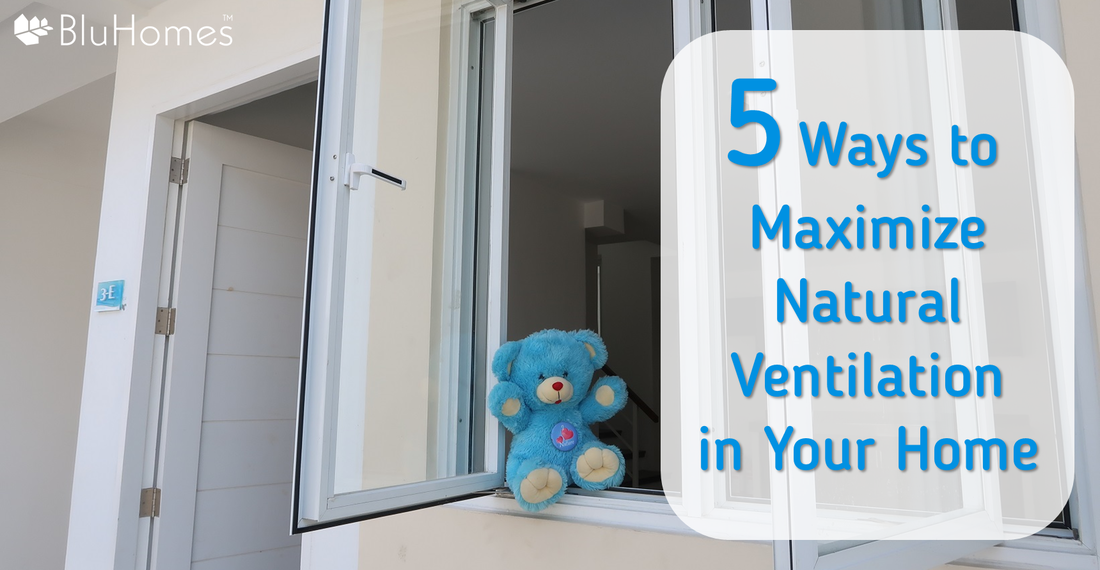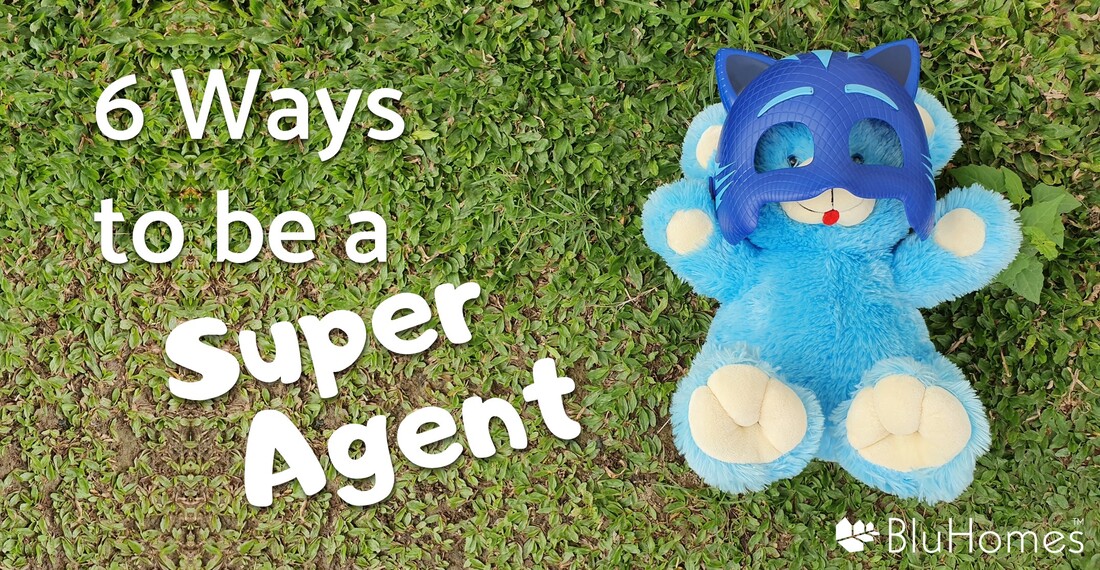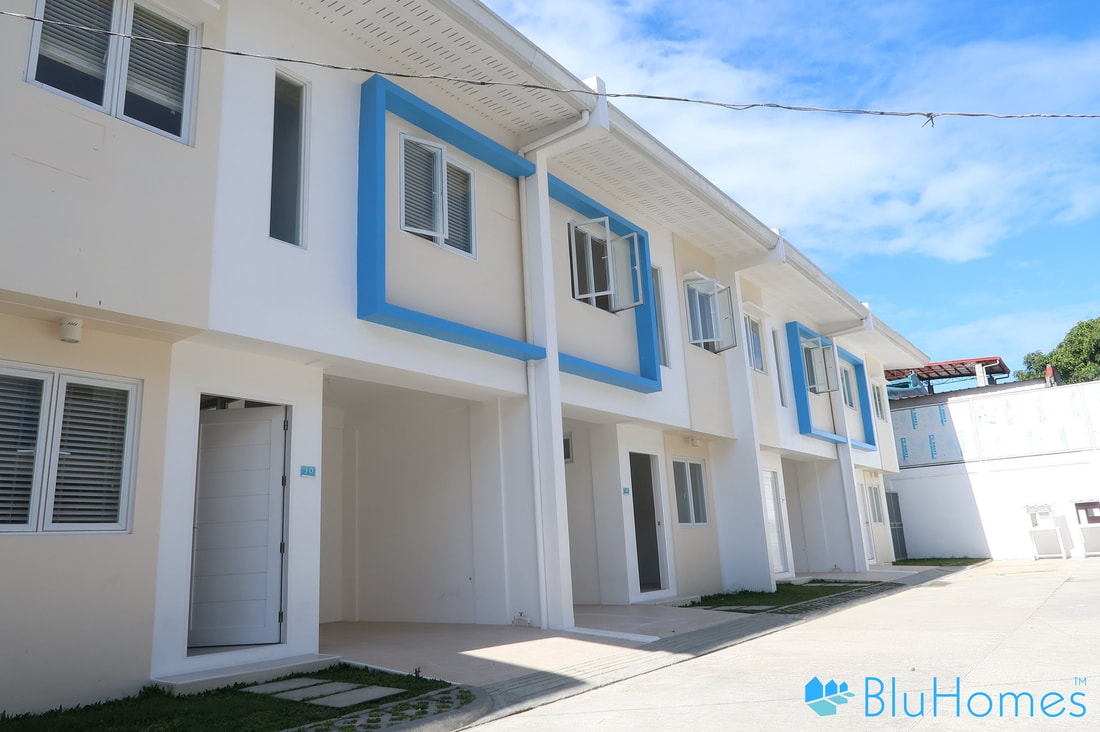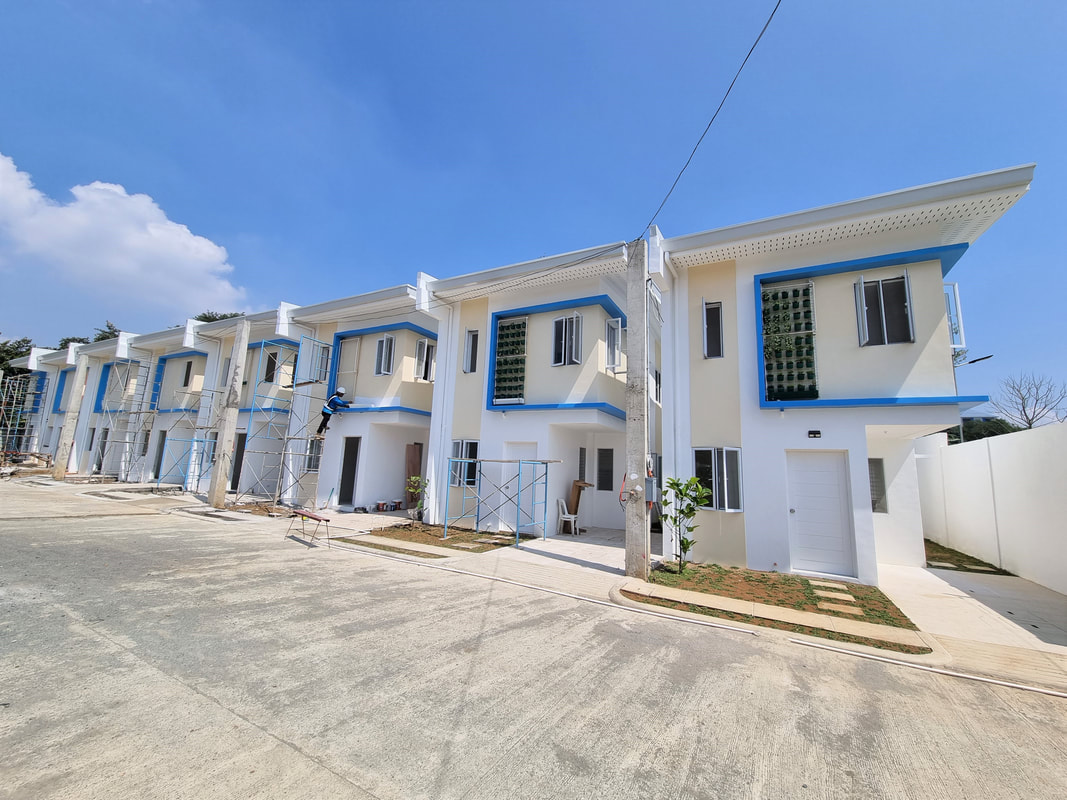|
Philippine native trees called Gakakan are planted on each home in BluHomes Maya. These endemic trees, found only in the Philippines, are beautiful because of its large and oblong leaves. These small trees grow only up to 6 meters and their flowers bloom during summer months. Sadly, they are becoming rare in their native habitat and we have to plant more of it. BluHomes Maya are eco-friendly homes certified by EDGE of World Bank as a green building development. It is located in Kamagong Street, Amparo Village, Barangay 179, North Caloocan City, Metro Manila. It is a real estate development of Aztala Corporation in the Philippines. Each home in BluHomes Maya has 3 bedrooms, 2 toilets, 1 car garage, 62 sqm floor area and 52.5 sqm lot area. Each home is designed to be passively cooled, energy-efficient and water-efficient and to be provided with 540 watts solar panels, super-insulated roofs and exterior walls, fully-operable casement windows, and water-saving toilets and faucets. Learn more about the eco-friendly homes of BluHomes Maya at www.bluhomes.ph/maya You may watch the video of these native trees in BluHomes Maya below:
1 Comment
You might think that white roofs are plain and boring, but it is one of the best ways to make your home energy-efficient and eco-friendly. Each color in the rainbow has a specific reaction to heat. Basically, darker colors absorb heat more than light colors. Solar Reflectivity is what green building practitioners call this characteristic. Solar Reflectivity is a numerical value, expressed as a percentage, that indicates how much solar heat is reflected back to the atmosphere. Here are the average Solar Reflectivity of typical roof colors:
Blue & Green – 30% Brown – 34% Grey – 37% Red – 40% White – 70% If your roof is color brown, only 34% of the solar heat is reflected back to the atmosphere and 66% is absorbed by your roof, transmitting the heat into your home. If your roof is color white, 70% is reflected back and only 30% of the heat is absorbed and transmitted into your home. In simple words, white roofs can make your home cooler by reflecting the heat from direct sunlight. Not only will it make you feel comfortable, it can also reduce your use of air-conditioners and lessen your electric bills. Further down the line, the reduction of electricity can also reduce the carbon dioxide being emitted into the atmosphere. This is why the roof at BluHomes is color white – to make the home eco-friendly. More articles about eco-friendly homes:BluHomes Gakakan in Amparo, North Caloocan are eco-friendly homes certified by EDGE of World Bank as a green building development. Here are its eco-friendly features. Homes in BluHomes Gakakan are eco-friendly because we used three categories in designing the homes. First, homes here are designed to be naturally cool and comfortable because we used the technique called passive cooling. Second, homes here are energy-efficient and save electricity. Third, homes here are water-efficient and conserve clean water.
BluHomes Gakakan is a certified green building development certified by EDGE or Excellence in Design for Greater Efficiencies that is a product of World Bank and represented by the Philippine Green Building Initiative. This certification proves that we passed the strict standards and requirements of EDGE in order to acquire a green building certificate.
The benefits of these for the future homeowners will be, first, they are comfortable inside because their homes are naturally ventilated and passively cooled. Second, they will be able to conserve on their electric bills and water consumption. Lastly, and most important of all, their homes can help save the environment.
In this article, we will learn the 3 benefits of our windows in making our homes eco friendly in the Philippines as presented by Paolo Bellosillo of BluHomes.
Which room do you prefer, the one with a small window or big window? Most of us feel much more comfortable in choosing the room with a big window. Not only are windows beneficial for us living inside the home, but are also important in making our homes eco friendly. The 3 benefits of our windows are view, natural ventilation and natural light. 1. ViewHave you seen an airplane that doesn’t have windows? Imagine yourself riding in this type of airplane - scary right? As human beings, it is in our nature to find the connection to the outdoors and to nature. Our windows are our only way for us to see the outside of our homes. It gives us the feeling that we are still connected to nature. If we have a view of the outdoors, we feel that our room is bigger and more open. If we can see the outside from our home through our windows, we feel free, we feel much more calm and comfortable, and we feel more inspired, especially if we see trees and greeneries outside. 2. Natural VentilationImagine yourself inside a house with no windows. Aside from not being able to breathe, it will be very hot inside because there is no natural ventilation. Our windows give us opening for fresh air outside to enter our home for us to breathe and to make it comfortable inside. We discussed natural ventilation in the previous article. You may read the article from this link: 3. Natural LightWe feel happier and lighter if we can see the natural light from the outside. There is already a natural light outside from our sun that is free - why don’t we use it to illuminate our indoors? When we see natural light inside our homes, it boosts our mood and makes us feel more inspired. It will also be healthier for us because natural light is a good source of Vitamin D and it has health benefits to our eyes. Other than these, we can see some savings in our electricity bills because we will use less artificial lights. These amazing benefits of windows inspire us in BluHomes to make our windows bigger. All rooms inside BluHomes are designed to have a minimum window-to-wall ratio of 20%. For example, if the size of the room is 10 square meters, the size of the window opening is minimum 20% or 2 square meters. The size of the window is proportional to the size of the room. If natural ventilation and natural light are well-promoted in our home, the use of artificial lights and air conditioners will be lessened, energy consumption will be reduced, and in turn pollution and carbon dioxide emission will be reduced, making our home eco friendly. In BluHomes, we believe that we all have a moral obligation to protect our planet for our children and future generations. Our homes must be eco friendly.
In this article, we will learn how to maximize natural ventilation to make our homes eco friendly in the Philippines as presented by Paolo Bellosillo of BluHomes. Air is free. However, it is outside our homes. It will enter our homes using natural ventilation. Natural ventilation is the process of supplying air into the home without using any mechanical equipment.
There are three ways to maximize natural ventilation to make your home eco friendly: size of window openings, placement of windows and size of rooms 1. Size of window openingThe bigger the window opening, the better natural ventilation. What is important here is the size of the opening, the part of the window that can be opened. These are the 4 common types of windows being used in the Philippines. Fixed Windows are windows that cannot be opened and are used only for view. These windows do not promote natural ventilation in our homes. Sliding Windows are windows wherein when you open one side, the other side gets closed. When you open the other side, the other side gets closed as well. These windows only have 50% opening and do not really promote natural ventilation. What we need to maximize natural ventilation are Jalousie Windows and Casement Windows. There are windows that, when you open them, have 100% opening to promote natural air to come inside the home. This is the reason why casement windows are used in BluHomes, to maximize natural ventilation inside the home and make it eco friendly. 2. Placement of windowsAnother way to maximize natural ventilation for our homes is how the windows are positioned. These are the 2 common types of natural ventilation for homes: Single-Sided Ventilation is where the windows are placed in only one side of the room. Natural air will still enter the room but you will need bigger window openings. Cross Ventilation is where the windows are placed across each other and is the best for natural ventilation. 3. Size of roomThe third way to maximize natural ventilation in our homes is how big our rooms are. This includes not only the width and length of your room, but the ceiling height as well. The bigger the measurements, the better will air flow inside your home.
In BluHomes, aside from the spacious rooms, the ceiling height is 2.5 meters to promote natural ventilation inside the home. According to EDGE, a certification body that certified BluHomes Maya as a green building, if the size of the room is 10 square meters, the size of the window must be at least 20% of this or 2 square meters to support natural ventilation in the home. This is how BluHomes based the sizes of its window openings. If natural ventilation is well-promoted in our homes, it will be naturally cooler inside. With naturally cooler homes, use of air conditioners is lessened, energy consumption is reduced, and in turn pollution and carbon dioxide emission are reduced, making the home eco friendly. In BluHomes, we believe that we all have a moral obligation to protect our planet for our children and future generations. Our homes must be eco friendly. Learn more about the eco friendly homes of BluHomes at www.bluhomes.ph/ Let's all love nature! Discover how the colors of our home can make it eco-friendly. Notice that when you wear white shirt, you feel cooler. When you wear black shirt, you feel warmer. This is because of the science of colors. Light or what scientists call ‘visible light’ is composed of seven colors, like a rainbow.
For example, if light hits the surface of a blue object, what happens is that the color blue in the said rainbow is reflected and goes to your eyes. That is why you see it as blue in color. The other six colors in the rainbow are absorbed by the object.
If light hits the surface of a white object, all colors of the rainbow are reflected and hit your eyes, and you see it as white in color. The white object does not absorb any light. If light hits the surface of a black object, there is no light that is reflected and no light hits your eyes. That’s why you see it as color black. All the 7 colors of the light is absorbed by the object. And because this visible light moves like a wave or what is called ‘light waves,’ the darker the object, the more light waves are absorbed and thus the hotter the object becomes when hit by light. The same is true for our homes. If your home is painted with dark colors, when light hits it, it absorbs more light waves and more heat. This also applies to your roof if it is painted with dark colors. This is why your home is hotter inside. However, if your home is painted with light colors like BluHomes that is painted mainly with reflective white, it reflects more light waves and no heat is absorbed. The same also applies to your roof when painted with light colors, like the roof of BluHomes that is painted with white. This makes your home cooler inside. Because of the light colors of your exterior walls and roof, it will be naturally cooler inside. And because it is much more comfortable inside, your usage of air conditioners will be reduced, your energy consumption will be lessened, and the pollution and carbon dioxide that your home emits get reduced. Most important of all, it makes your home eco-friendly. In this article, we learned how important the colors of your home is for it to have less impact to the environment. We at BluHomes believe that our homes need to be eco-friendly. Let’s all love nature! We always hear the term ‘global warming’ everywhere, but what is it really in simple terms? What are the causes of it and why do we care?
All around the world, people can feel that our weather nowadays is getting warmer and warmer. This phenomenon is called global warming, the gradual heating or increase in temperature of the Earth’s surface. Scientists measure the average temperature of the Earth yearly, shown in the graph below from www.climate.gov, and data really show the warming of the Earth. Causes of global warmingGlobal warming is caused by the phenomenon called Greenhouse Effect, where certain gases, collectively called greenhouse gases such as carbon dioxide, gets emitted from our cars and power plants and stays in the Earth’s atmosphere. When the heat from the sun hits the Earth’s surface, these greenhouse gases trap this heat and causes the warming of the Earth. That is why we want to reduce the emission of carbon dioxide from our cars and power plants. Effects of global warmingBecause of global warming, our ice caps at the north and south poles are melting into the ocean and our sea level is steadily increasing. This is why, in the future, our coastal cities such as Manila and Cebu will be permanently under the water. That is, if we don’t do something to fight global warming. What you can doWe need to reduce our emission of carbon dioxide from our cars. Reduce our use of cars. Use public transportation or do carpooling if possible. Support energy-efficient and low-emission cars.
We need to reduce our emission of carbon dioxide from our power plants. Conserve electricity from our homes. Turn off lights and appliances that are not being used. Limit your use of air conditioners and open your windows for natural cooling. Support energy-efficient or inverter-type appliances. Support eco-friendly products. Our small individual efforts matter - a lot. CNN reported last June 2019 that “Climate change could pose ‘existential threat’ by 2050.” It means that our children and grandchildren will be having a hard time surviving in 2050. According to the report, in 2050, our children and grandchildren will experience 20 days of lethal heat per year. Sea levels around the globe will rise, sinking some areas in the Philippines that are close to the sea, including Metro Manila and Cebu City. People living in those areas will be displaced. Many families will suffer. These are all due to climate change.
These things might happen in the future because of our negligence today. The good news is that we can do something about it now.
Eco-friendly products are products that have less negative impact to the environment. They use sustainable materials, conserve energy, and have low carbon emissions. They contribute significantly less, if not at all, to climate change. So why do we need to support eco-friendly products? Because we love our children and grandchildren. Because we have high hopes for the future generation. Because we don’t want them to suffer because of our negligence today. And more importantly, because we love the environment and appreciate how it provided us all we need to thrive on this planet. Going eco-friendly simply makes sense. Native trees are our local trees that have naturally lived and thrived in the Philippines, like the Narra, Kamuning, and Gakakan. Why should we care to plant these native trees instead of the imported ones? Native trees require no water from usSince native trees have been living in the Philippines for thousands of years, they have already adapted to the local weather. We don’t need to water them because they have been living only with the local rain patterns ever since. Native trees require low maintenanceNative trees have already adapted to the local soil and environment in the Philippines. Because of this, they require no fertilizers, no supplements, and no preservatives. We don’t need to trim them or do anything to them for them to live. Compared to imported onesImported trees, on the other hand, are not used to the local weather, local air and local environment. When you plant them here, they will need plenty of maintenance and attention from us. We need to water them daily, some of them even twice a day, in order for them to live. We need to give them fertilizers and preservatives for them to grow. Planting imported trees might not even help in saving our environment, after all. Choose native treesYes, imported trees provide oxygen and help reduce carbon dioxide from the atmosphere, but so do native trees. If you have to choose, plant native trees instead of imported ones. It has much more benefit for our local environment. Native trees need helpAlthough native trees seem to not need any help from us, they actual do. They are being cut down. Their population is declining. People tend to prefer imported ones. Native trees need support from us by helping promote them and by planting more of them. That is why the success of BluHomes is not measured by its income statement or by the number of homes sold. BluHomes measures its success by the number of native trees planted. In every BluHomes development, we commit to plant a native tree on each home and on the common areas to help promote native trees and provide eco-friendly homes.
There are several ways to cool your home, and one of them is free. That is natural ventilation. It is a way of harnessing the wind that nature provides to your advantage. Here are 5 ways to maximize natural ventilation to cool your home. 1. Open your windows and doorsThe best way to allow natural ventilation to flow into your home is by opening your windows and exterior doors. There is no other way for it to enter.
2. Install insect screenOpening your windows can leave your home wide open for insects. Installing insect screens on your windows will give you peace of mind that insects cannot enter your home and will encourage you to open your windows. You can install insect screen to your exterior doors as well. 3. Install window blindsOpening your windows will allow direct sunlight to penetrate into your home. You can block direct sunlight by installing window blinds. Window blinds are the best window cover for maximizing natural ventilation because its blades can block direct sunlight and the spacing between its blades allows outside air to penetrate. 4. Use casement windowsCasement windows or swing-type windows are best for natural ventilation because they are 100% openable, unlike the ordinary sliding windows that are only 50% openable. These casement windows will give you double the area of opening to allow more air to enter. 5. Plant trees in your yardPlanting trees in your yard, especially in front of your windows, can also help block direct sunlight from going into your windows so that you will not worry about heat coming into your home. Not to mention that these trees can naturally make the surrounding air cooler. As an example, BluHomes Breeze, an eco-friendly townhouse development in Amparo Caloocan, is designed to maximize natural ventilation. All its windows are casement-type windows for 100% window opening, and all are provided with insect screens and window blinds to encourage homeowners to open their windows. The front door and rear door are provided also with insect screens to allow natural air to flow through the home. The front yard is semi-landscaped to encourage homeowners to plant trees. The best part about using natural ventilation to cool your home is that it makes your home eco-friendly. You will use less air conditioners and electric fans, consume less energy, and help reduce carbon emissions to the atmosphere. And that can make your home eco-friendly.
|
Eco Friendly HomesBluHomes are eco-friendly homes certified as green building developments. See the latest eco-friendly developments of BluHomes by clicking here:
Archives
February 2024
|

